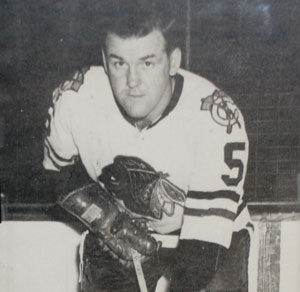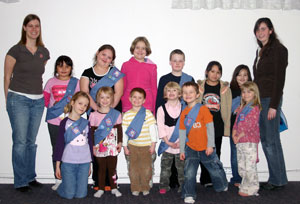
A former Wayne resident who worked his way up through the hockey ranks is being honoured posthumously, by being inducted into the Alberta Hockey Hall of Fame.
“A rough rugged hombre, 'Tex' as he is known to his teammates is gradually honing his defensive skills to a superior level,” reads a description of Jack Evans on his 1956 hockey card when he played for the Rangers. “Opponents rate him one of the toughest defenders in the league.”
Evans, who passed away in 1996, is one of this year’s inductees into the Alberta Hockey Hall of Fame. This comes just two years after the Drumheller Miners Allan Cup championship team was inducted. Brent Pedersen of Drumheller nominated Evans in the outstanding achievement category.
According to hockeydb.com, Evans played for the Lethbridge Maple Leafs from 1947 to 1949 before playing three games with the New York Rangers. He jumped back and forth between the NHL, AHL and WHL and eventually worked his way into a full time role with the Rangers. It was with the Chicago Black Hawks that he really shone. He was part of the 1961 Stanley Cup winning squad, playing along side Bobby Hull and Stan Mikita. He made All-star appearances in 1961 and 1962.
He retired from playing hockey in 1972 and went behind the bench to coach. He led the Salt Lake Golden Eagles of the Central Hockey League to two championships and was selected "coach of the year" three times. He coached in the NHL for the California Seals, the Cleveland Barons and ran the bench for the Hartford Whalers from 1983 to 1988.
Rugged is a good description of Evans, according to Jim Fisher, who is also part of the nomination committee for Hockey Alberta. Evans, in his playing days, was 6’ 1” and 185 pounds but he stood up to the best of them.
“As a hockey player he was well respected. Rather than talk, he played the game well,” said Fisher. “His defense partner was Pierre Pilote who was the flashy type of guy. They would talk about Pilote a lot, but I thought if you look closely, it was Evans who was anchoring that defense.”
"No one took any liberties with him.”
Off the ice, Fisher describes him as astute and quiet.
Evans is among three inductees in the achievement categories, which also includes the 1977 to 1980 University of Alberta Golden Bears and the 1970-1971 Red Deer Rustlers.
To be nominated, the person must have lived in Alberta for at least five years, must have personal and professional accomplishments in the game of hockey, must have made an impact in the game beyond a local or regional level and must have received significant other recognitions. Nominations could be made for either an individual or team, active or retired.
The induction ceremony will take place at the Hockey Alberta Awards Gala on Saturday, June 12 at the Capri Hotel and Convention Centre in Red Deer.
The Alberta Hockey Hall of fame is located within the Alberta Sports Hall of Fame in Red Deer.









